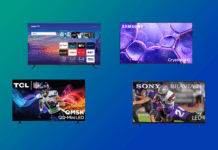
This is a question many parents are bound to be asking as back to school fever ramps up. I’m in a pretty decent position to weigh in on the question. One of my kids spent the previous school year using a laptop in class; another brought a tablet to school every day. Your mileage is going to vary depending on age and courses, but after a full year of using both high tech options I can say that for many students a tablet is definitely just as good as a laptop—even better in some ways—but you need to make sure it’s properly accessorized to make the most of it.
One Laptop, One Tablet
Last year, two of my kids were in the situation where it was recommended they have a laptop available for use in class and after school. Fortunately, as a technology pack rat, I tend to have spare equipment available, so I didn’t have to buy anything. However, I didn’t have two of the same thing, so one kid got my old MacBook Air, the other was equipped with an iPad Air.
After being in use for the school year, both kids were happy with their devices. Their teachers felt the technology had enhanced their learning experience and I had the opportunity to observe both solutions—tablet and traditional laptop—in action.
 Accessorizing the Tablet
Accessorizing the Tablet
On its own, a tablet is no match for a laptop for most students. The fundamentals are there, but without spending a little time and money the tablet experience is likely to be disappointing. Out of the box, you have web access, the ability to run apps and onboard storage. But to make the most out of the device and turn it into a true alternative to a laptop, you need to customize it and add a few accessorize.
Microsoft helped out tremendously when it released free mobile-optimized app versions of Word, Excel and OneNote for Android tablets and the iPad (Surface tablets run the full desktop Office versions and usually come with a free one-year subscription). Download and install these apps and suddenly the tablet has the software most commonly used for school assignments, including compatibility for sharing files with teachers or other students—even if they’re working on a PC.
The most important accessory is a Bluetooth keyboard case. In my daughter’s case, I used a ZAGG keyboard case. This means you can ditch the virtual keyboard, which is fine for typing a short message but brutal for writing longer material. The case also provides some protection from the inevitable banging around in her backpack.
Laptop Advantages
I did see some situations where that traditional laptop offered an advantage over the tablet.
Its keyboard is full-sized and has better key action than the add-on for the iPad, so typing was a slightly better experience on the laptop. The display is larger, which can be preferable in some situations. USB ports are very handy for ‘sneaker-net’ exchange of files and the iPad lacked this (although other tablets like the Microsoft Surface do offer USB ports). Another iPad-specific complaint is the lack of mouse support. Finally, while we didn’t run into the issue this year, it’s worth noting that some courses (especially at the high school and college or university level) require the use of software that simply isn’t available for a tablet, meaning you must opt for a laptop.
Tablet Advantages
All in all, the downsides to using the iPad instead of a laptop were relatively minor. For a Grade 10 student, the iPad turned out to be more than adequate and in fact, going with a tablet instead of a laptop turned out to have some significant advantages.
While the latest crop of Ultrabooks and convertible/2-in-1 laptops offer all-day battery life, not all portable PCs do. But it’s tough to find a tablet that doesn’t offer a solid 8-10 hours of battery life, meaning students don’t have to worry about running out of juice so they don’t have to carry around a power adapter.
The tablet is a more compact form factor than most laptops, even when enclosed in a keyboard case. This isn’t just a win in terms of less strain carrying the device to and from school and more available backpack space, it also takes up less space on the desk. That’s a plus in a school environment where students often share a workspace.

As Gadjo Sevilla detailed in a recent student tech tips post, mobile devices like tablets make excellent mobile scanners. A laptop may have a built-in camera (most likely it’s a front-facing one for video conferencing), but it can’t match the cameras offered with most tablets for ease of use. My daughter made frequent use of this capability with her iPad, snapping quick shots of notes on the blackboard, as well as using it to “scan” documents and text in the library.
Reading text feels much more natural on a tablet than with a laptop, especially when the tablet can be held like a slate.
And speaking of being held like a slate, tablets like the iPad also offer the ability to be used with a stylus for hand writing notes, diagraming or drawing. You can use a finger too, but a capacitative stylus (like the FiftyThree Paper Pencil stylus Ted Kritsonis reviewed) doesn’t cost much and adds a lot to the experience. My daughter is big on art and used her iPad and a stylus frequently for art class and personal doodling.
Finally one of the big benefits with choosing a tablet over a laptop is cost, a factor that most parents are very interested in. You could buy a Chromebook for much less than a tablet; but generally speaking, a tablet is often less expensive than a laptop, even when you factor in the accessories like a keyboard case and stylus. In my case it was about $600 for the iPad and accessories versus roughly $1200 for the MacBook Air, although you can certainly buy tablets and laptops that cost less. But given that most kids want a tablet anyway—for casual gaming, music and surfing the web—making the tablet pull double duty as entertainment and educational tool (instead of buying both a laptop and a tablet) definitely tips the cost equation in favour of the tablet.
So yes, in my experience a tablet can be every bit as good as a laptop for students.

If you really want to simplify the choice, convertible laptops like Microsoft’s Surface 3 may just be the ultimate solution. They offer the full tablet experience along with the power and PC software compatibility of a laptop. These devices are a bit heftier and (depending on configuration and options) more expensive than a tablet, but they offer a solution that covers off virtually any student’s requirements.



